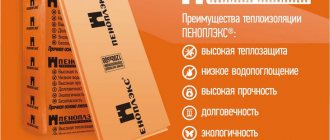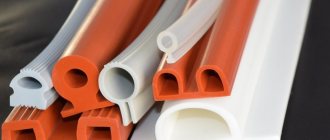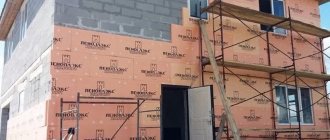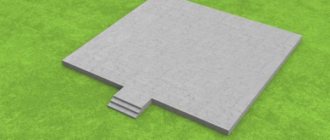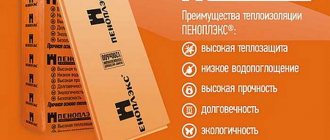Choosing insulation is not the easiest thing. If until some time craftsmen had to choose between polyurethane and stone wool, today extruded polystyrene (aka EPS) and PIR board have been added to these pillars of thermal insulation sheathing. Let's try to understand the pros and cons of the last two options, and find out which one is better.
PIR and XPS production
The physical properties of both types of insulation are due to differences in their production technology. Extruded polystyrene, as the name suggests, is produced by extrusion, where a molten polymer of ethylene and benzene is forced through a steel grid with microscopic holes. As it cools and gradually expands, it forms a rather dense structure, where each individual polymer thread is tightly connected to the others.
PIR board is produced by catalysis: by starting a special chemical reaction, manufacturers of such boards first create a compound called polyisocyanurate, and then mix it with polyester polyol and foaming additives. The result is a similar composition, somewhat similar to polystyrene foam (where numerous closed spheres-balls filled with a special gas are interspersed with air voids), but denser and more durable.
Information about manufacturers
| Ravatherm | Ursa | TechnoNIKOL | Penoplex | |
| Homeland of the brand | Belgium | Spain | Russia | Russia |
| Year of foundation | 1961 | 1907 | 1992 | 1998 |
| XPS Release | since 1998 | since 2003 | since 2006 | since 1998 |
| Country of Origin | Hungary | Russia | ||
| Factory locations |
|
|
|
|
| Link | ravatherm.com | ursa.ru | tn.ru | penoplex.ru |
| Ravatherm | Ursa | |
| Homeland of the brand | Belgium | Spain |
| Year of foundation | 1961 | 1907 |
| XPS Release | since 1998 | since 2003 |
| Country of Origin | Hungary | Russia |
| Factories |
|
|
| Link | ravatherm.com | ursa.ru |
| TechnoNIKOL | Penoplex | |
| Homeland of the brand | Russia | |
| Year of foundation | 1992 | 1998 |
| XPS Release | since 2006 | since 1998 |
| Country of Origin | Russia | |
| Factories |
|
|
| Link | tn.ru | penoplex.ru |
Distinctive features of XPS manufacturers
| Ravatherm |
|
| Ursa |
|
| TechnoNIKOL |
|
| Penoplex |
|
PIR and XPS durability
The “plastic” polymer threads of extruded polystyrene “soldered” together make it a much more durable material compared to PIR board. The structure of EPS gives it rigidity, resistance to deformation and serious loads, making extruded polystyrene an ideal option for combining with building panels. On the contrary, PIR board, which has a low density, is more susceptible to drying out, often crumbles at the edges and is considered an extremely unreliable material for wall cladding. The winner in this category is extruded polystyrene .
How to choose EPS insulation
The main parameters by which the material is selected are the density, size and configuration of the slabs.
Technical specifications
The density of polystyrene foam is an important criterion for selection. The larger it is, the stronger the slab and the greater the load it can withstand without deforming. Products with the highest density are even used in the construction of roads and runways.
The bulk of such products for universal use have a density from 25 to 45 kg/m3; in the marking it is indicated by the corresponding numbers. But there are products of both higher and lower brands. The higher the expected load on the insulated base, the greater this indicator should be.
For example, for insulation of plinths and foundations it is better to choose material of grade 35-40 and higher, but for roofs 25 is sufficient.
Thermal conductivity PIR and XPS
As we know from a high school physics course, air conducts heat well, not only into rooms, but also out of them. If we remember that a PIR board is a collection of polyisocyanurate spheres generously diluted with air pockets, it becomes clear that such a material will not be the best way to store heat in a house. Dense extruded polystyrene behaves completely differently, which does what is actually required of insulation - it reliably insulates the building and does not release precious heat from it. The winner in this category is extruded polystyrene .
Where is EPS used?
The material described is used in a variety of fields, but we are interested in what EPS is in construction. This is a universal thermal insulation material that is used to insulate almost all parts of buildings:
- walls;
- foundations and plinths;
- floors and ceilings;
- basements and undergrounds;
- roofs;
- blind areas.
It is recommended to insulate EPS walls from the outside or use it as an intermediate layer when laying walls made of bricks and blocks.
Insulated brickwork Source bitrix24.ru
For external wall insulation, both ordinary EPS boards are used, which are then covered with plaster or a curtain wall, as well as decorative sandwich panels that do not require finishing.
It is important! If the house is insulated from the inside with polystyrene foam boards, it is necessary to take into account their low vapor permeability and consider a competent ventilation system. Otherwise, the indoor air will be humid, which will lead to mold.
In addition to insulating the main structural elements of buildings, slabs and other products made from EPS are used for thermal insulation of above-ground and underground pipelines, wells, septic tanks, caissons, cellars, and heated greenhouses. This material is laid on a rough base when installing a heated water floor, and is used as permanent formwork in the construction of foundations and walls.
Thermal insulation substrate for heated floors made of polystyrene foam Source fis.ru
Water absorption PIR and XPS
It is not difficult to guess that the situation is similar in terms of waterproofing. The water vapor diffusion resistance coefficient (μ) of polyisocyanurate averages 30–70, while the same average for extruded polystyrene is already 80–250. The reason is still the same: the voids of the PIR board perfectly conduct moisture in both directions, and while this is good for vapor barrier, it is bad for waterproofing. By the way, the higher the coefficient of resistance to water vapor diffusion, the higher the thermal insulation properties, which means that extruded polystyrene becomes the winner in this category.
Video description
This video shows how to properly attach insulation to Ceresit CT 83 adhesive:
- Fastening with dowels.
This method is more economical and is used on uneven substrates, as well as on wooden surfaces. Plastic dowels with a large head hold light insulation well, a few pieces per slab are enough. Typically, fasteners are installed in the corners and in the center.
- Combined method.
If the walls are leveled with cement plaster, EPS boards can be glued onto a still fresh mortar and additionally secured with dowels.
- Frame method.
It is used for insulating walls under a suspended ventilated façade. The slabs are placed between the wooden frame guides in the same way as is done when insulating the floor. If the frame is metal, they are mounted on hangers fixed to the wall, and only then the profiles are installed.
Insulation of EPPS facade for finishing with siding Source 918747.ru
Fire resistance PIR and XPS
Here the picture changes to the exact opposite. Extruded polystyrene begins to soften already at 73 degrees Celsius, melts and flows at one hundred degrees, and burns at 360 degrees, generously releasing toxic fumes into the air. The PIR board is covered on both sides with a special coating, which, when a fire occurs, forms a dense carbon crust on the surface and does not allow the flame to pass further. In order to understand which is better, just look at the level of flammability: for extruded polystyrene it is low G3-G4, while the PIR board is practically non-flammable G1. The winner is the PIR board.
Common sizes
XPS insulation boards are available in several sizes:
- 30x585x1185,
- 20x585x1185,
- 50x585x1185,
- 100x585x1185,
- 1200x600x50 mm.
Depending on the insulation area, it is easy to calculate which slabs should be used. If necessary, any panel can be cut.
The calculation looks like this:
- Knowing the length and width of the facade, the area is calculated.
- Find out the area of one slab. For example, 1 XPS insulation panel, measuring 30x585x1185, is 0.693325 m2.
- It remains to divide the given façade area by the area of 1 slab, and multiply the resulting number by 1.05-1.1 (taking into account the margin). Round the resulting number to whole numbers.
This way you can find out the amount of material needed to finish the building.
PIR and XPS adhesion
The molecular structure of polyisocyanurate gives it an incredibly high level of adhesion, allowing it to “stick” to any surface. For extruded polystyrene, things are somewhat worse - however, the question remains how relevant it is to install insulation using glue. However, where extruded polystyrene cannot cope with all its desire (for example, when installing a “wet facade”), the PIR board will come to the rescue with its excellent ability to attach even to a wet surface of the plaster mortar. The winner in this category is the PIR .
Minuses
Despite all the advantages of the unique insulation, it is necessary to pay attention to its disadvantages. Caution should be exercised when XPS comes into contact with certain types of varnish, acetone or drying oil. These substances can not only damage the surface of the insulator, but also completely dissolve it.
Also, the insulation is easily susceptible to the influence of products obtained through the distillation of petroleum and the influence of some alcohols. That is why you should pay special attention to the composition of the adhesive mixtures with which you plan to attach the insulator. It is important that they do not contain ethyl acetate, petroleum toluene, coal tar or its derivatives.
During prolonged use in air, extruded polystyrene foam undergoes oxidation, although modern industry is gradually reducing all negative aspects to a minimum.
Weight of PIR and XPS boards
The “airiness” of the PIR board makes it much lighter in weight compared to other types of insulation and especially dense polystyrene. The PIR board is the best option for cladding roofs, plaster facades and pitched roofs - all those structures that are critical to excess load. In addition, the high fire resistance class of the PIR board makes it possible not to create fire protection belts from corrugated sheets, which are mandatory for extruded polystyrene, which is another way to reduce the overall weight of the insulation. The winner in this category is the PIR .
Range
On the building materials market you can find polystyrene thermal insulator XPS from different manufacturers. The most popular products are Ursa, an American brand Dow.
TechnoNIKOL offers a fairly wide range of extruded polystyrene foam. This includes Technoplex slabs used to insulate balconies, loggias, partitions, as well as a large number of different insulation products from the Carbon line. The Carbon series includes materials intended for professional builders (Prof), for insulating private houses and cottages (Eco), for thermal insulation of roads, floors with high loads (Solid), and also used as the main layer in various thermal insulation panels (Sand) .
Ultraviolet and its effect on PIR and XPS
However, what prevents us from calling roof cladding with PIR boards an ideal option is the fear of polyisocyanurate panels from sunlight. PIR boards deteriorate when exposed to ultraviolet light, which means they will require an additional level of protection to protect them from sunlight. More protection - more mass. This circumstance not only negates the weight advantage of the PIR board described above, but also gives extra points to extruded polystyrene, which is absolutely indifferent to ultraviolet radiation. The winner in this category is extruded polystyrene .
Chemical resistance PIR and XPS
Any insulation sometimes has to interact with other finishing materials, so before covering it is worth thinking about whether there will be caustic chemical compounds on this list. In this regard, the PIR board looks preferable, which firmly resists most adhesives, impregnations and paints and does not decompose from exposure to solvents. Extruded polystyrene is quite unstable to all this chemistry, but...how often will your insulation come into contact with glue or paint, even in theory? However, the winner in this category is the PIR .
Structure
Extruded polystyrene foam, manufactured according to all the rules, must have a uniform structure. Be sure to evaluate this when purchasing finishing materials. There should be no voids, recesses, seals or other defects on the canvas. Flaws indicate low quality products.
The optimal cell size varies from 0.05 to 0.08 mm. This difference is invisible to the naked eye. Low-grade XPS insulation has enlarged cells ranging from 1 to 2 mm. The microporous structure is essential for the effectiveness of the material. It is the key to minimal water absorption and high efficiency.
Price PIR and XPS
This parameter is the last in order, but far from least important. The technology for creating PIR boards with all their two-stage catalytic complexities is quite expensive for manufacturers, which directly affects the cost of this type of finishing. PIR panels are noticeably different from extruded polystyrene even at the cost of one slab, let alone a full-fledged renovation that uses dozens or even hundreds of such slabs. For obvious reasons, sometimes you have to vote with rubles, turning a blind eye to minor shortcomings. The winner in this category is extruded polystyrene .
As in many similar cases, it cannot be said that “this” insulation is good and “this” is bad. The choice depends on many factors - cost, fire hazard, strength and even UV resistance. The rest is up to you. You need lightweight, fire-resistant insulation, which, moreover, can easily withstand the effects of chemicals - take a PIR board. You need durable, inexpensive and truly warm - pay attention to extruded polystyrene. Take your time, consult with experts, compare and recalculate - and sooner or later you will find what you need.
We offer you a comparison table between PIR and XPS , in which all the differences are clearly visible.
Features of the material
Extruded polystyrene foam was created in the USA in the early 40s of the 20th century. It is a synthetic thermal insulation with unique properties, which were achieved through the use of special technologies during the production process.
Modern manufacturers have mastered the production of material of various colors and shapes: in the form of cylinders, rolls, slabs, segments. The cost of insulation depends on its dimensions, density and manufacturer.
Production
XPS is produced by extrusion. Polystyrene granules under the influence of high temperatures and pressure are mixed with a foaming agent in a special apparatus - an extruder. Then, using pulling rollers and pressure, the material is squeezed through a die, which helps give the material the desired shape.
Foaming of the mixture ends when it comes into contact with air. The next stages of manufacturing are cooling of the insulation and its stabilization. The production process is completed by cutting the thermal insulator into pieces of the established size and packaging it using thermal machines.
For comparison: in the production of conventional polystyrene (foam), granules of the material are steamed with water vapor until they significantly increase in size, until the mold intended for the insulator is completely filled.
Carbon dioxide, mixtures of light freons or freon-free systems based on CO2 can be used as foaming agents. It was the use of substances purified from freons that made it possible to bring the production of the material to a qualitatively new level, making it environmentally friendly and clean. The heat insulator coming out of the extruder has a uniform structure with closed pores and microcells ranging in size from 0.1 to 0.2 mm.
Technical specifications
XPS insulator has the following unique properties:
- vapor permeability coefficient – 0.004 mg/(m•h•Pa);
- thermal conductivity level – from 0.026 to 0.032 W/(m•K);
- moisture absorption in 24 hours – 0.3%;
- specific gravity – 25-45 kg/m3.
Characteristics of expanded polystyrene
The positive qualities of XPS insulation make it perhaps the best option among the entire range of thermal insulation materials on the market:
- Extruded polystyrene foam is characterized by minimal hygroscopicity;
- Has low conductivity of heat and steam;
- Does not absorb moisture;
- Resistant to fire;
- Thanks to its structure, XPS has unusually high compressive strength and biological stability (that is, it does not harbor insects and rodents);
- This is an environmentally friendly and safe material;
- It is impossible not to note the simplicity and ease of installation - all work on thermal insulation can be done with your own hands, without assistants;
- Expanded polystyrene is not the cheapest insulation material, but its price is quite reasonable. Of course, it is a little higher than, for example, mineral wool or ordinary polystyrene foam, but the costs will be doubled. We'll talk about this a little later.
Expanded polystyrene in the form of mats of various thicknesses
Reliable thermal insulation of residential, municipal and industrial buildings plays a major role in reducing heating costs. And, as you have already noticed, extruded polystyrene foam is quite capable of providing effective insulation - with its help you can get rid of heat loss for a long time and save a lot of money on your budget.
Note! XPS expanded polystyrene can be used to insulate loggias, walls, floors, foundations, roofs, communications, garages, and many other structures.
Balcony insulation with XPS slabs

